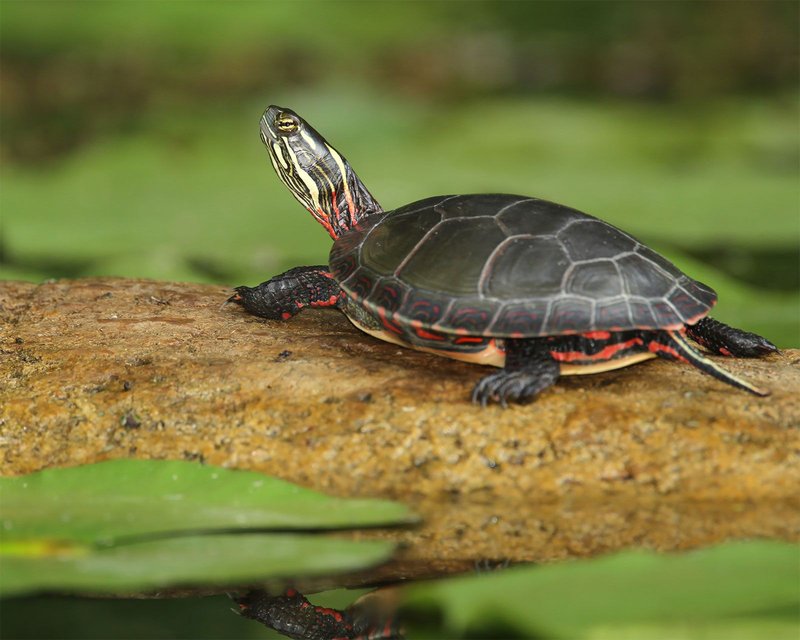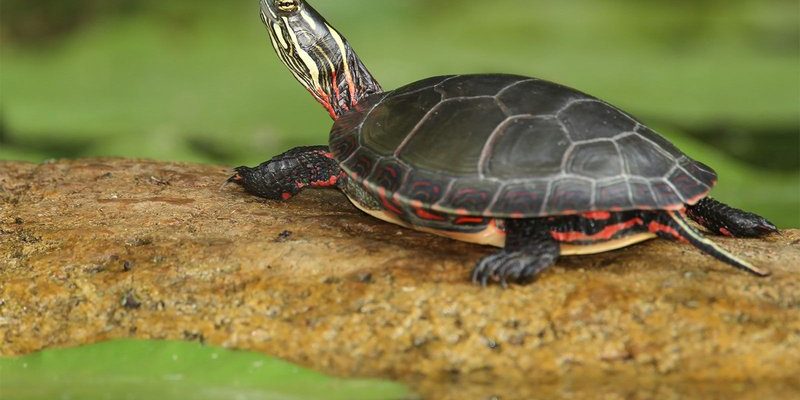
The painted turtle, scientifically known as *Chrysemys picta*, is one of North America’s most common and beloved turtles. They’re easily recognizable with their bright yellow stripes and beautifully patterned shells. But how did these turtles come to be? What are the milestones in their evolutionary history that led them to thrive in lakes, ponds, and rivers across the continent? Let’s dive into the rich and intricate past of the painted turtle and explore its adaptations, ancestry, and the environmental changes it has faced over time.
Origins of the Painted Turtle
The story of the painted turtle begins with its distant relatives millions of years ago. Turtles as a group are ancient reptiles, tracing back to the late Triassic period, around 220 million years ago. This means that turtles have been around longer than dinosaurs! The ancestors of modern turtles began to develop unique characteristics, such as a hard shell for protection and a distinctive body structure.
As evolution progressed, turtles branched out into various species, adapting to different environments. The painted turtle, specifically, is believed to have evolved around 5 million years ago. It’s part of a larger family known as Emydidae. This family includes other familiar turtles, like the box turtle and slider turtle. You might be wondering how the painted turtle got its name. It’s because of the stunning red, yellow, and black patterns that resemble beautiful artwork—hence “painted.”
Physical Characteristics
So what makes the painted turtle so special, physically? First off, let’s talk about that shell. The top part, known as the carapace, is often smooth and shiny, which helps them glide through the water with ease. The colors can vary, but they typically have a dark green or black base with bright red and yellow markings along the edges. This not only makes them look striking but also serves a practical purpose. The bright colors can help attract mates.
Now, let’s move onto their limbs. Painted turtles have webbed feet that are perfectly designed for swimming. They can paddle through the water swiftly, making them excellent swimmers. But here’s the thing—they can also maneuver on land, albeit a bit more clumsily. When they’re not swimming, you’ll often find them basking on rocks or logs, soaking in the sun to regulate their body temperature.
The Role of Habitat
Habitat plays a crucial role in the painted turtle’s evolutionary history. They thrive in ponds, lakes, and slow-moving rivers, where the water is shallow and warm. These environments offer ample food sources, like aquatic plants, insects, and small fish. The painted turtles have adapted to utilize these resources effectively, helping them grow and reproduce.
Interestingly, their choice of habitats has influenced their behavior. For instance, painted turtles are known for their basking behavior. By sunbathing on a warm rock or log, they can raise their body temperature, which is essential for their metabolism. This behavioral adaptation has been vital for their survival, especially in cooler climates.
Adaptive Features
Adaptations have played a significant role in how the painted turtle has survived and thrived over centuries. One key feature is their ability to hibernate during winter months. In colder regions, painted turtles can go into a state of brumation, which is similar to hibernation. During this time, their metabolism slows down, allowing them to survive without eating for several months.
Another interesting adaptation is their reproductive strategy. Painted turtles typically lay their eggs in sandy or loose soil during late spring or early summer. The female digs a hole, lays her eggs, and then covers them up, leaving them to develop independently. This strategy increases the chances of survival as the eggs are laid away from the water, protecting them from predators.
Challenges and Conservation Efforts
Despite their adaptability, painted turtles face numerous challenges today. Habitat destruction due to urbanization, pollution, and climate change puts significant pressure on their populations. Wetland loss is particularly harmful, as it reduces their available habitats and food sources. Moreover, they are often victims of road traffic when they attempt to cross roads to find nesting sites.
Conservation efforts are underway to protect painted turtles and their habitats. Many organizations focus on habitat restoration, pollution control, and public awareness campaigns. By educating people about the importance of these turtles and their ecosystems, conservationists hope to ensure that future generations can enjoy their beauty.
The Painted Turtle’s Place in Culture
The painted turtle holds a special place not just in science but also in culture. Various Native American tribes have stories and legends about turtles, often symbolizing wisdom and longevity. These tales reflect the deep connection between the land and its creatures, highlighting the respect and admiration that many cultures have for the painted turtle.
In modern times, the painted turtle is often featured in educational programs, encouraging children and adults alike to learn about wildlife and conservation. They remind us of the delicate balance of nature and the importance of protecting our environment.
The evolutionary history of the painted turtle is a remarkable journey filled with adaptations and resilience. From their ancient ancestors to their vibrant present, these turtles have evolved to thrive in a variety of habitats while facing numerous challenges along the way. Understanding their story not only deepens our appreciation for these unique creatures but also highlights the importance of conserving their habitats for the future.
If you ever spot a painted turtle basking in the sun, take a moment to appreciate its beauty and the incredible journey it has taken through the ages. By respecting their habitats and supporting conservation efforts, we can ensure that these wonderful turtles continue to grace our lakes and rivers for generations to come.

